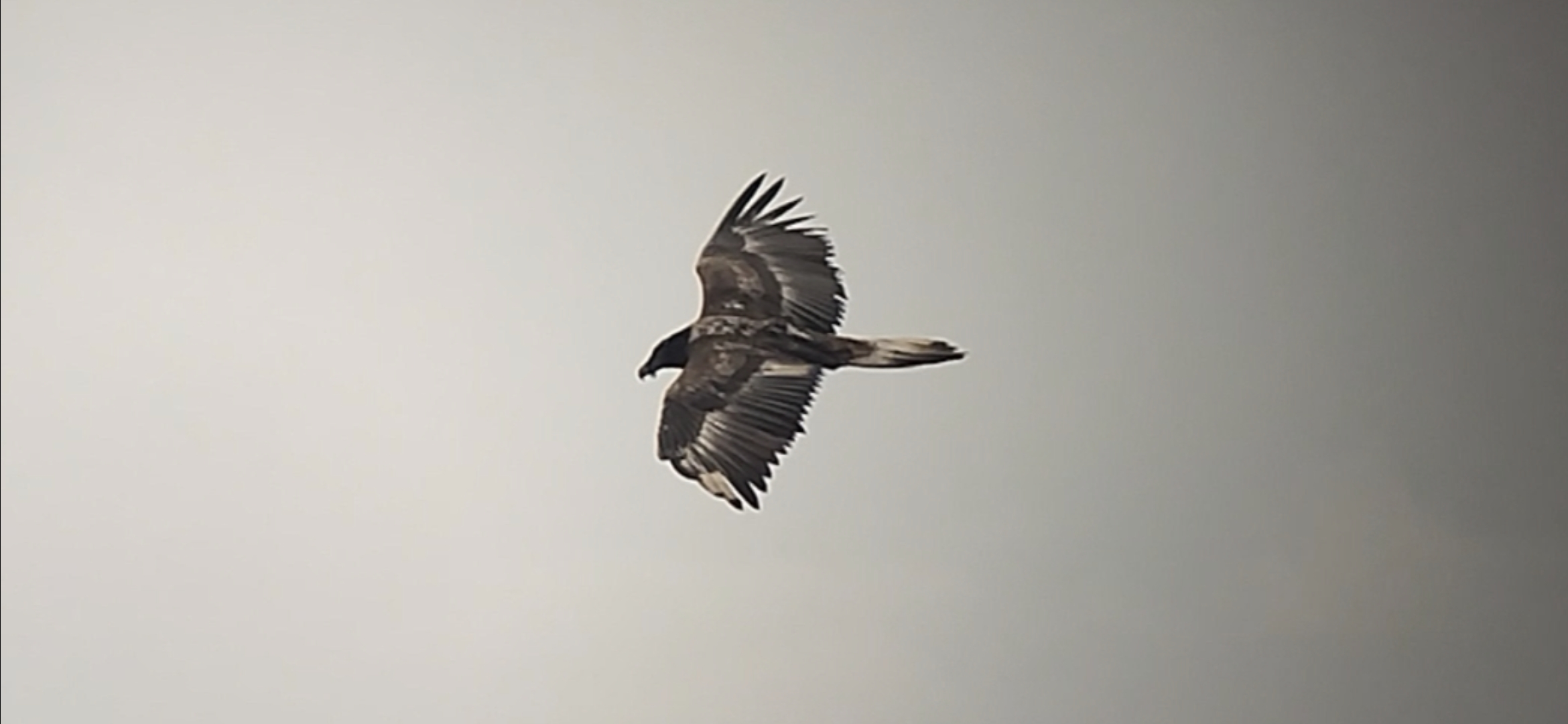
One more captive-bred Bearded Vulture now lives in the Grands Causses Regional Natural Park following his recent reintroduction with the LIFE GypConnect project!
Get to know Peyre
The young Bearded Vulture BG1116, now baptised ‘Peyre’, hatched naturally on 21 March 2021 at the Bearded Vulture Captive Breeding Centre of Guadalentín, currently managed by us at the Vulture Conservation Foundation (VCF) following an agreement with the Junta de Andalucía. The male vulture is the second chick of Elías and Viola during this breeding season and was weighing 152g as a hatchling. The team took care of him for the first few days and then Peyre was adopted by Bearded Vultures at the Centre to ensure natural rearing, making him suitable for release and life in the wild. Eventually, the Bearded Vulture Captive Breeding Network, coordinated by the VCF on behalf of EAZA’s EEP, assigned Peyre to the LIFE GypConnect project for release in the Grands Causses. Around three months after hatching, Peyre grew well and was ready for life in the wild!
Release of Peyre
Peyre was 95 days old when he arrived in the Grands Causses on 24 June 2021. Mrs Macq, who is the mayor of Revens village located near the reintroduction site, has accepted to be the ‘godmother’ of the young vulture. The children of Montjaux school in Aveyron named the vulture ‘Peyre’, which means ‘stone’ in Occitan.

Ahead of his release, the team fitted him with identification rings, bleached a unique set of feathers and equipped a GPS transmitter on his back in order to recognise him and monitor his progress in the wild. Then, a team from LPO Grands Causses released the young vulture using the ‘hacking method’, which is more or less the natural way of fledging, placing Peyre in the same reintroduction site as the previous birds of this year, in the ‘Gorges du Trévezel’ in Aveyron. This method involves releasing nestlings that hatched in captivity at an artificial nest in suitable habitat to acclimatise to the natural environment before they take their first flights. With this technique, the nestlings are able to associate the place where they are released with the area of hatching so that when they reach breeding age, which is around 8-10 years old, they select these places to breed. For the first few months after the release, an attentive team from LIFE GypConnect also closely monitors the new inhabitants and their daily progress to help ensure their wellbeing.
To this day, Peyre is doing very well, eating and training for his first flight by regularly flapping his wings. ‘Pyrénées,’ the young female who arrived on 28 April 2021 and is already flying well, often interacts with Peyre according to the monitoring team.
We hope Peyre fledges successfully and has a long life in the wild!
Sign up to our newsletter and never miss any vulture news!
LIFE GypConnect

Led by the League pour la Protection des Oiseaux (LPO), the LIFE GYPCONNECT project aims to establish a breeding population of Bearded Vultures in the Massif Central and Department of the Drôme. Releasing captive-bred Bearded Vultures into the wild at sites such as the Parc Naturel Régional des Grands Causses, Parc Naturel Régional des Baronnies Provençales and Parc Naturel Régional du Vercors will create a core population that will connect the two populations of the species in the Alps and Pyrenees. To facilitate movements between the new population and the Alpine and Pyrenean populations the LIFE GYPCONNECT team is creating a network of supplementary feeding stations, and tackling threats such as poisoning, and collision and electrocution with the electricity infrastructure.




